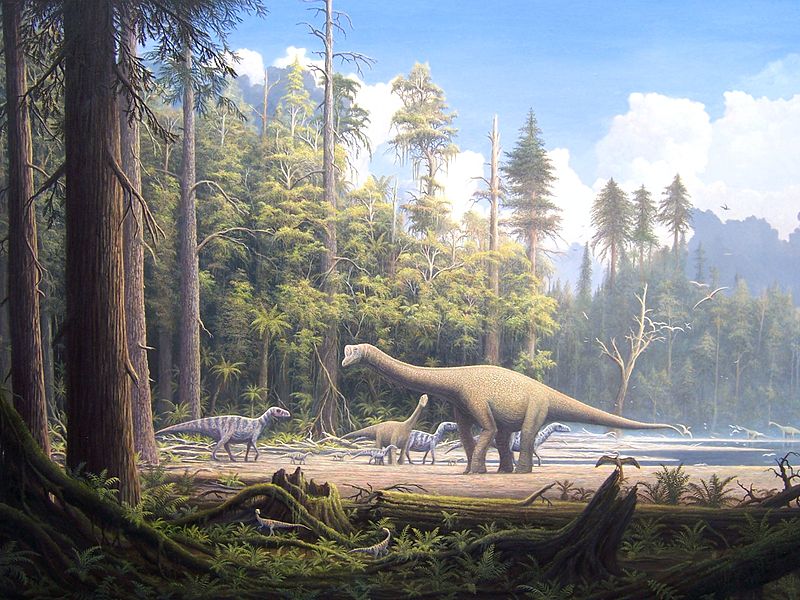The entire history of the Earth is, well, pretty long. It stretches back some 4.5 billion years to the time when the earth formed in the planetary disk of the young star we would come to know as the sun. Life first began to appear somewhere within the first billion years after the earth settled in to a slightly more stable existence. These hardy characters were likely some form of prokaryote (a single-celled organism with no cell nucleus). These things could survive rather harsh environments and extremes not typically found on today’s version of Earth.
Not far behind them (half a billion years or so) came cyanobacteria that could photosynthesize sunlight into sugars for energy, and produce oxygen while they were at it! It’s a pretty neat trick, but it would be a while (2.5 billion years) before land plants put down any roots. All of this leads us to grasses (poaceae) which did not come on to the scene for another half a billion years or so. Grasses evolved around the time the dinosaurs called it a day (about 65 million years ago). I like to picture the dinosaurs in a lush, tropical environment filled with plants and trees of various kinds. This is more or less true, but grasses would not be among the plants you would find if you stumbled upon a scene like this one.
What’s impressive about grasses is that in such a relatively short time, they have become perhaps the most dominant form of plant life on the planet. They exist on every continent (including parts of Antarctica), and can be found almost everywhere on land, whether the climate is hot, cold, wet or dry. They grow fast, can put down deep roots, and can be durable in wind, water and even fire. No matter what happens to the earth, it’s not likely that grasses will be exiting the stage any time soon.
And yet, grasslands are some of the most underrated, and under-protected ecosystems in the world. It’s time to change this, and give grasses their props. We, as the newcomers on the scene, (barely a wink of geologic time) owe it to them.



4 Responses
Excellent post, Steve.
I say you combine the best of James Michener & Laura Ingalls Wilder & write a historical fiction book called “Prairie.” I’ll be the first to buy it.
Thanks Kevin. You are too kind.
The most inspiring creation story ever written is the evolutionary one, like your post has described. Thanks for sharing.
Long live our native grasslands!
Well said!